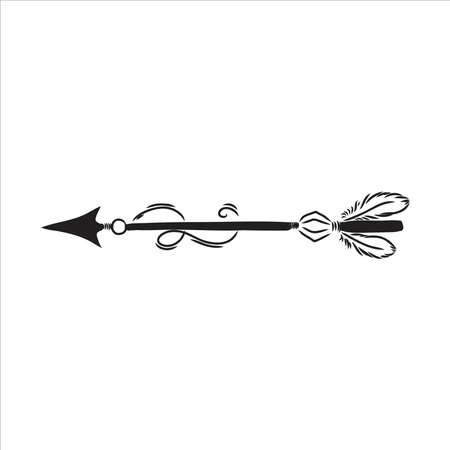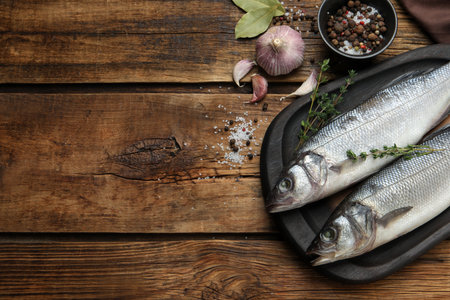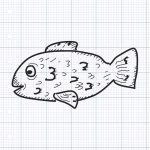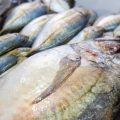Understanding Ice Fishing Conditions
When it comes to ice fishing, choosing the right lure isn’t just about what looks good or whats popular. Its about matching your presentation to the specific conditions youre fishing in. Environmental factors like ice thickness, water clarity, and temperature all play a big role in how fish behave—and how likely they are to bite.
Ice Thickness
Thicker ice often means less light penetration, which can affect how visible your lure is to fish. In low-light conditions under thick ice, brighter colors or lures that produce vibration or sound can help attract attention. On the other hand, thinner ice allows more light through, so natural colors and subtle presentations may be more effective.
Water Clarity
Water clarity changes from lake to lake—and even day to day depending on weather and runoff. Clear water usually calls for natural-looking lures and finesse techniques since fish can get a better look at what you’re offering. In murky or stained water, go for high-contrast or glow-in-the-dark lures that stand out.
Temperature
Water temperature affects fish metabolism and activity levels. In colder temps, fish tend to be sluggish and less aggressive. That means youll want to slow down your presentation and maybe choose smaller lures that require less energy for the fish to chase. Warmer winter temps (relatively speaking) might trigger more active feeding, allowing for larger or faster-moving baits.
Quick Reference Guide
| Condition | Effect on Fish | Lure Recommendation |
|---|---|---|
| Thick Ice / Low Light | Reduced visibility | Bright colors, rattling lures, glow baits |
| Thin Ice / More Light | Better visibility | Natural colors, subtle movement |
| Clear Water | Fish rely on sight | Realistic patterns, finesse jigs |
| Muddy Water | Sight is limited | High-contrast colors, scented baits |
| Cold Temps (Below 35°F) | Sluggish fish behavior | Small lures, slow jigging action |
| Slightly Warmer Temps (35–40°F) | Slightly more active fish | Larger lures, moderate jigging speed |
By paying attention to these environmental details before you drop your line, you can significantly improve your odds of getting bites. Matching your lure choice to the current ice fishing conditions makes all the difference between a slow day and a successful one.
2. Target Species and Their Preferences
When it comes to ice fishing, knowing what species youre targeting is key to choosing the right lure. Each fish has its own feeding habits, preferred prey, and behavior under the ice. Heres a breakdown of some of the most popular ice fishing targets in the U.S. and the lure types that tend to work best for each.
Walleye
Walleye are known for being light biters, especially in cold water. They prefer low-light conditions and often feed near the bottom.
Best Lure Types:
- Spoon lures (like Jigging Rap or Buck-Shot Rattle Spoon)
- Jig heads tipped with minnows or soft plastics
- Rattle baits for aggressive feeders
Tips:
Use glow or UV colors during low light periods and keep your presentation slow and steady. A subtle jigging motion can trigger strikes.
Perch
Yellow perch travel in schools and are usually aggressive feeders, making them fun and productive to target through the ice.
Best Lure Types:
- Tungsten jigs tipped with waxworms or spikes
- Spoons with flash and scent
- Maggot-tipped teardrop jigs
Tips:
Downsize your presentation when the bite gets tough. Bright colors like chartreuse or orange tend to attract perch well.
Crappie
Crappies are finicky but can be very rewarding once located. They often suspend at various depths, so electronics help a lot when targeting them.
Best Lure Types:
- Small jigs (1/64 to 1/32 oz) with soft plastic tails
- Tiny spoons tipped with minnows or waxworms
- Ice flies under a slip bobber setup
Tips:
Use a slow fall rate and pause between movements. White, pink, and glow colors work well in stained water.
Lake Trout
Lake trout are apex predators and love large, flashy presentations. Theyre often found in deeper water and require heavier gear.
Best Lure Types:
- Tube jigs (white is a classic color)
- Spoons with flutter action (like Kastmaster or Swedish Pimple)
- Soft swimbaits on heavy jig heads
Tips:
Lakers respond well to aggressive jigging followed by a sudden stop — this mimics fleeing baitfish. Use sonar to track their movement and adjust your depth accordingly.
Lure Selection Quick Guide by Species
| Species | Recommended Lure Types | Presentation Tips |
|---|---|---|
| Walleye | Spoons, jig heads with minnows, rattle baits | Slow jigging near bottom; use glow colors in low light |
| Perch | Tungsten jigs, small spoons, teardrop jigs with maggots | Quick pops and pauses; bright colors attract schools |
| Crappie | Tiny jigs, mini spoons, ice flies under bobbers | Suspend at various depths; slow lift-and-drop works best |
| Lake Trout | Tubes, heavy spoons, large soft swimbaits | Aggressive jigging followed by pause; track using sonar |
Selecting the right lure based on your target species can make all the difference on the ice. Understanding how each fish behaves helps you fine-tune your approach and maximize your chances of success.

3. Types of Ice Fishing Lures
Choosing the right lure for ice fishing is all about understanding what youre targeting and how fish behave in cold water. Under the ice, fish are less active, so your lure presentation needs to be more subtle and specific. Here’s a breakdown of the most common types of ice fishing lures—jigs, spoons, and soft plastics—and when each shines on the ice.
Jigs
Jigs are probably the most popular ice fishing lures due to their versatility. They come in various shapes, sizes, and weights, often tipped with live bait or soft plastics for added attraction.
Advantages:
- Can be fished vertically with subtle movements
- Effective for almost any species under the ice
- Easy to pair with bait like waxworms or minnows
Best For:
| Species | Conditions |
|---|---|
| Panfish (Bluegill, Crappie) | Clear water, light tackle setups |
| Walleye | Dawn/dusk hours near structure |
| Trout | Cold, deep lakes with little current |
Spoons
Spoons are metal lures that flutter and flash as they drop, imitating wounded baitfish. Theyre great for calling fish in from a distance thanks to their flash and vibration.
Advantages:
- Create visual appeal and vibration to attract aggressive fish
- Work well in deeper water where visibility is lower
- Can be jigged aggressively or fished passively depending on mood of fish
Best For:
| Species | Conditions |
|---|---|
| Northern Pike | Murkier water, larger spoons for visibility |
| Lake Trout | Deep lakes with lots of vertical movement needed |
| Walleye | Low-light conditions or stained water lakes |
Soft Plastics
Soft plastics offer a lifelike feel and motion that can trigger bites from finicky fish. Often used as trailers on jigs, they come in a wide range of shapes like grubs, minnows, or insect imitators.
Advantages:
- Lifelike action even with minimal movement—ideal for cold water fish behavior
- No need to re-bait constantly like with live bait
- Great for experimenting with color and size combinations
Best For:
| Species | Conditions |
|---|---|
| Panfish (Perch, Bluegill) | Tough bite days when subtle action matters most |
| Bass (in southern ice zones) | Mild winter conditions where bass remain semi-active |
| Crappie | Suspended schools over deeper basins; use micro plastics on light jigs |
Selecting the right type of lure starts with knowing what species youre after and reading the conditions beneath the ice. With these core lure types in your tackle box, you’ll be better equipped to match your presentation to both the target species and how theyre behaving that day.
4. Matching Lure Color and Size to Conditions
When youre ice fishing, picking the right lure color and size can make all the difference between a slow day and a bucket full of fish. The key is to adjust your presentation based on water clarity, light levels, and how the fish are behaving. Let’s break it down in a simple way.
Water Clarity
The clearer the water, the more natural your lure should look. In stained or murky water, youll want something brighter or with more contrast to help fish find it.
| Water Clarity | Recommended Lure Colors |
|---|---|
| Clear | Natural colors like silver, white, brown, or translucent shades |
| Slightly Stained | Chartreuse, orange, gold, or glow-in-the-dark options |
| Muddy/Dark | Bright colors like neon green, hot pink, or black for contrast |
Light Levels
The amount of daylight or ambient light under the ice also affects how your lure appears. On bright days or when fishing in shallow clear water, subtle colors work well. In low-light conditions — like early morning, late evening, or overcast days — use lures that reflect light or glow to catch attention.
Lure Color Tips by Light Condition:
- Bright Sunlight: Use metallic finishes (silver/gold) or natural tones.
- Cloudy/Overcast: Try glow lures or high-contrast colors.
- Dawn/Dusk/Night: Glow-in-the-dark or UV-enhanced lures are best.
Lure Size and Fish Behavior
Bigger isn’t always better. Fish behavior changes with temperature and pressure systems, especially during winter. When fish are aggressive, they’ll chase larger lures. But if theyre sluggish — which is common in cold water — smaller baits often get more bites.
| Fish Mood | Lure Size Recommendation |
|---|---|
| Aggressive/Active | Larger spoons or jigs (1/4 oz and up) |
| Neutral/Finicky | Medium-sized lures (1/8 oz range) |
| Lethargic/Inactive | Tiny jigs and finesse plastics (1/32 oz to 1/16 oz) |
Tuning Your Presentation by Species
Certain species respond differently to lure size and color. For example:
- Panfish (Bluegill, Crappie): Small tungsten jigs in bright or natural colors depending on clarity.
- Walleye: Medium to large jigging spoons in chartreuse, gold, or glow for low light.
- Northern Pike: Bigger flashy lures with bold colors; these fish love action and noise.
- Lake Trout: Larger tube jigs or swimbaits in white or baitfish patterns; go big when targeting trophy fish.
A Quick Tip:
If youre not getting bites after 10–15 minutes on a spot, try switching either color or size before moving locations. Sometimes just a small change makes a big impact!
Selecting the right lure color and size isnt just guesswork — its about reading the conditions around you and understanding what the fish want that day. With a little practice and observation, youll start making smarter choices that put more fish on the ice.
5. Presentation Techniques That Trigger Strikes
Once youve picked the right lure for your target species and conditions, how you present that lure under the ice can make all the difference. Fish under the ice are often sluggish due to cold temperatures, so matching your presentation style to their mood is key. Lets take a closer look at some common ice fishing techniques—jigging, dead sticking, and tip-ups—and how they align with different fish behaviors.
Jigging Styles
Jigging is one of the most popular and effective ways to attract fish in winter. The way you move your rod and lure can imitate injured baitfish or trigger curiosity in nearby predators. Here are a few common jigging styles:
| Jigging Style | Description | Best For |
|---|---|---|
| Fast Jigging | Quick, aggressive rod lifts and drops | Pike, aggressive Walleye, active Perch |
| Slow Jigging | Smooth and subtle movements with pauses | Panfish like Bluegill or Crappie, neutral Walleye |
| Pounding | Tapping the jig on the bottom to stir up sediment | Burbot, Walleye near structure |
| Lift-and-Hold | Lift the jig slowly and hold it still for several seconds | Suspended Crappie, finicky Perch |
Dead Sticking
This technique involves dropping a baited lure or live bait to a desired depth and letting it sit motionless. Dead sticking works great when fish are slow-moving or wary of aggressive presentations. It’s especially effective with live minnows or soft plastics that have natural action even when still.
Tips for Dead Sticking:
- Use sensitive rods or spring bobbers to detect light bites.
- Add scent-based attractants to increase appeal.
- Pair with an active jigging rod nearby to draw fish in.
Tip-Up Techniques
A tip-up allows you to cover more water and detect bites without holding a rod. Theyre ideal for targeting larger, roaming species like Northern Pike or Lake Trout. The bait hangs below the hole and when a fish takes it, a flag pops up to signal the strike.
Key Tip-Up Strategies:
- Select lively bait like shiners or suckers for maximum movement.
- Set your bait just above weed lines or drop-offs where predator fish cruise.
- Avoid checking too frequently; let the setup do its job.
Tuning Presentation to Fish Mood
The effectiveness of each technique depends largely on how active the fish are. Heres a quick reference guide:
| Mood of Fish | Icy Behavior | Recommended Technique |
|---|---|---|
| Aggressive | Lively chases, frequent strikes | Fast Jigging or Active Tip-Ups |
| Neutral | Cautious follows, light taps | Smooth Slow Jigging or Dead Stick with Live Bait |
| Lethargic | No movement or reaction to lures | Lifeless Dead Stick setups with scent-enhanced bait |
6. Adapting Your Approach Throughout the Season
Ice fishing isn’t a one-size-fits-all game—especially when it comes to choosing the right lure. As winter rolls on, everything from water clarity and oxygen levels to fish metabolism and feeding behavior changes. To stay successful on the ice, you need to adjust your lure selection and presentation techniques as the season progresses.
Early Ice: Aggressive Bites and Active Fish
In early winter, right after safe ice forms, oxygen levels are high and fish are active. This is a great time to use flashy, aggressive lures like rattle spoons or jigging raps that mimic wounded baitfish. Fish like walleye, perch, and northern pike are more likely to chase down fast-moving lures.
Top Lure Picks for Early Ice:
| Species | Lure Type | Presentation Tips |
|---|---|---|
| Walleye | Jigging Rap | Use quick snaps with pauses to trigger strikes |
| Northern Pike | Spoon with Treble Hook | Add a minnow head for extra scent |
| Perch | Tungsten Jig + Plastic | Pound near bottom in quick bursts |
Mid-Winter: Slower Action Requires Finesse
This is often called the “mid-winter lull.” Fish become less active due to lower oxygen and light levels under thick ice and snow cover. Youll need to downsize your lures and slow your presentation. Think small jigs tipped with waxworms or soft plastics, subtle movements, and longer pauses.
Lure Adjustments for Mid-Winter:
| Species | Lure Type | Presentation Tips |
|---|---|---|
| Panfish (Bluegill/Crappie) | Tungsten Jig + Waxworm | Suspend just above schools; minimal movement |
| Trout | Marmooska Jig + Moussee or Maggot | Smooth lifts with long holds mid-column |
| Burbot (Eelpout) | Pound bottom during low-light hours (night/dawn) |
Late Ice: Feeding Frenzy Before Ice-Out
As spring approaches and sunlight increases, fish get more active again—especially panfish and predators preparing for spawn. Oxygen levels rise, and food becomes more available. This is the perfect time to go back to larger, brighter lures with more action.
Lure Strategy for Late Ice:
| Species | Lure Type | Presentation Tips |
|---|---|---|
| Panfish (Crappie/Bluegill) | Spoon + Soft Plastic Tail | Sweep up 1-2 feet then flutter down slowly |
| Northern Pike | Large Live Bait Rig or Tip-Up Setup | |
| walleye | Lipless Crankbait |
Tweak Based on Conditions Too!
Apart from seasonal timing, be ready to switch things up based on daily weather patterns, pressure systems, or even lake-specific conditions. For example:
- If the bite slows after a cold front, try downsizing your lure or switching from metal to plastic presentations.
- If snow cover clears up and sunlight penetrates deeper into the water column, fish may move shallower—adjust your depth accordingly.
- If other anglers nearby are catching fish with a specific color or jigging style—don’t be afraid to copy them!
The key is staying observant and flexible. By reading the conditions and understanding how fish behavior evolves throughout the ice season, you can fine-tune your lure selection and boost your chances of success every trip out.


